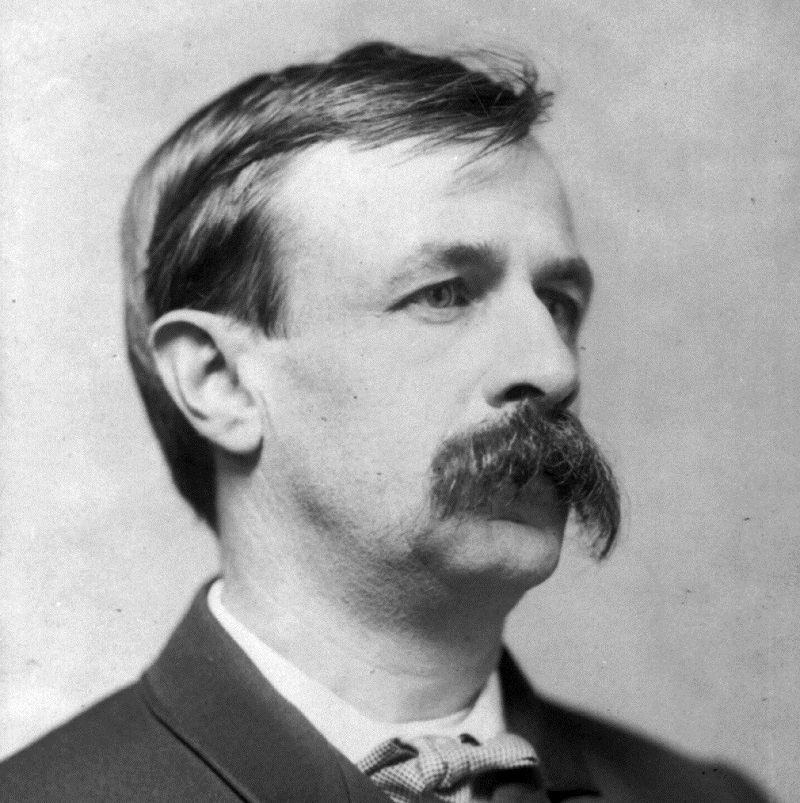Biography
Early years:
Edward Bellamy was born in Chicopee, Massachusetts. His father was Rufus King Bellamy (1816–1886), a Baptist minister and a descendant of Joseph Bellamy. His mother, Maria Louisa Putnam Bellamy, was herself the daughter of a Baptist minister named Benjamin Putnam, a man forced to withdraw from the ministry in Salem, Massachusetts, following objections to his becoming a Freemason.
Bellamy attended public school at Chicopee Falls before leaving for Union College of Schenectady, New York, where he studied for just two semesters. Upon leaving school, Bellamy made his way to Europe for a year, spending extensive time in Germany. Bellamy briefly studied law but abandoned that field without ever having practiced as a lawyer, instead entering the world of journalism. In this capacity Bellamy briefly served on the staff of the New York Post before returning to his native Massachusetts to take a position at the Springfield Union.
At the age of 25, Bellamy developed tuberculosis, the disease that would ultimately kill him. He suffered with its effects throughout his adult life. In an effort to regain his health, Bellamy spent a year in the Hawaiian Islands (1877 to 1878). Returning to the United States, Bellamy decided to abandon the daily grind of journalism in favor of literary work, which put fewer demands upon his time and his health.
Bellamy married Emma Augusta Sanderson in 1882. The couple had two children.
Literary career:
Bellamy’s early novels, including Six to One (1877), Dr. Heidenhoff’s Process (1880), and Miss Ludington’s Sister (1884) were unremarkable works, making use of standard psychological plots. A turn to utopian science fiction with Looking Backward, 2000–1887, published in January 1888, captured the public imagination and catapulted Bellamy to literary fame. The publisher of the book could scarcely keep up with demand. Within a year the book had sold some 200,000 copies and by the end of the 19th century it had sold more copies than any other book published in America outside of Uncle Tom’s Cabin by Harriet Beecher Stowe.
Although Bellamy claimed he did not write Looking Backward as a blueprint for political action, but rather sought to write “a literary fantasy, a fairy tale of social felicity,” the book inspired legions of inspired readers to establish so-called Nationalist Clubs, beginning in Boston late in 1888. Bellamy’s vision of a country relieved of its social ills through abandonment of the principle of competition and establishment of state ownership of industry proved an appealing panacea to a generation of intellectuals alienated from the dark side of Gilded Age America. By 1891 it was reported that no fewer than 162 Nationalist Clubs were in existence.
Bellamy himself came to actively participate in the political movement which emerged around his book, particularly after 1891 when he founded his own magazine, The New Nation, and began to promote united action between the various Nationalist Clubs and the emerging People’s Party. For the next three and a half years, Bellamy gave his all to politics, publishing his magazine, working to influence the platform of the People’s Party, and publicizing the Nationalist movement in the popular press. This phase of Bellamy’s life came to an end in 1894, when The New Nation was forced to suspend publication owing to financial difficulties.
With the key activists of the Nationalist Clubs largely absorbed into the apparatus of the People’s Party (although a Nationalist Party did run candidates for office in Wisconsin as late as 1896), Bellamy abandoned politics for a return to literature. He set to work on a sequel to Looking Backward titled Equality, attempting to deal with the ideal society of the post-revolutionary future in greater detail. The book saw print in 1897 and would prove to be Bellamy’s final creation.
Death and legacy:
Edward Bellamy died of tuberculosis in Chicopee Falls, Massachusetts. He was 48 years old at the time of his death.
His lifelong home in Chicopee was designated a National Historic Landmark in 1971.
Bellamy was the cousin of Francis Bellamy, famous for creation of the Pledge of Allegiance.
Bellamy Road is a residential road in Toronto is also named for the author.
Works
»» Six to One, a Nantucket Idyl. New York: 1877.
»» Dr. Heidenhoff’s Process. (1880)
»» Miss Ludington’s Sister. (1884)
»» To Whom This May Come (1888)
»» Looking Backward, 2000–1887. Boston: Houghton, Mifflin Co., 1889.
»» “How I Came to Write Looking Backward,” The Nationalist (Boston), vol. 1, no. 1 (May 1889), pp. 1–4.
»» The Programme of the Nationalists. Philadelphia: Bureau of Nationalist Literature, 1894. —First published in The Forum, March 1894.
»» Equality. New York: D. Appleton & Co., 1898.
»» The Duke of Stockbridge (1900)
»» Apparitions of Things to Come: Edward Bellamy’s Tales of Mystery & Imagination. Franklin Rosemont, ed. Chicago: Charles H. Kerr Publishing Company, 1990.
Source: Wiki






























